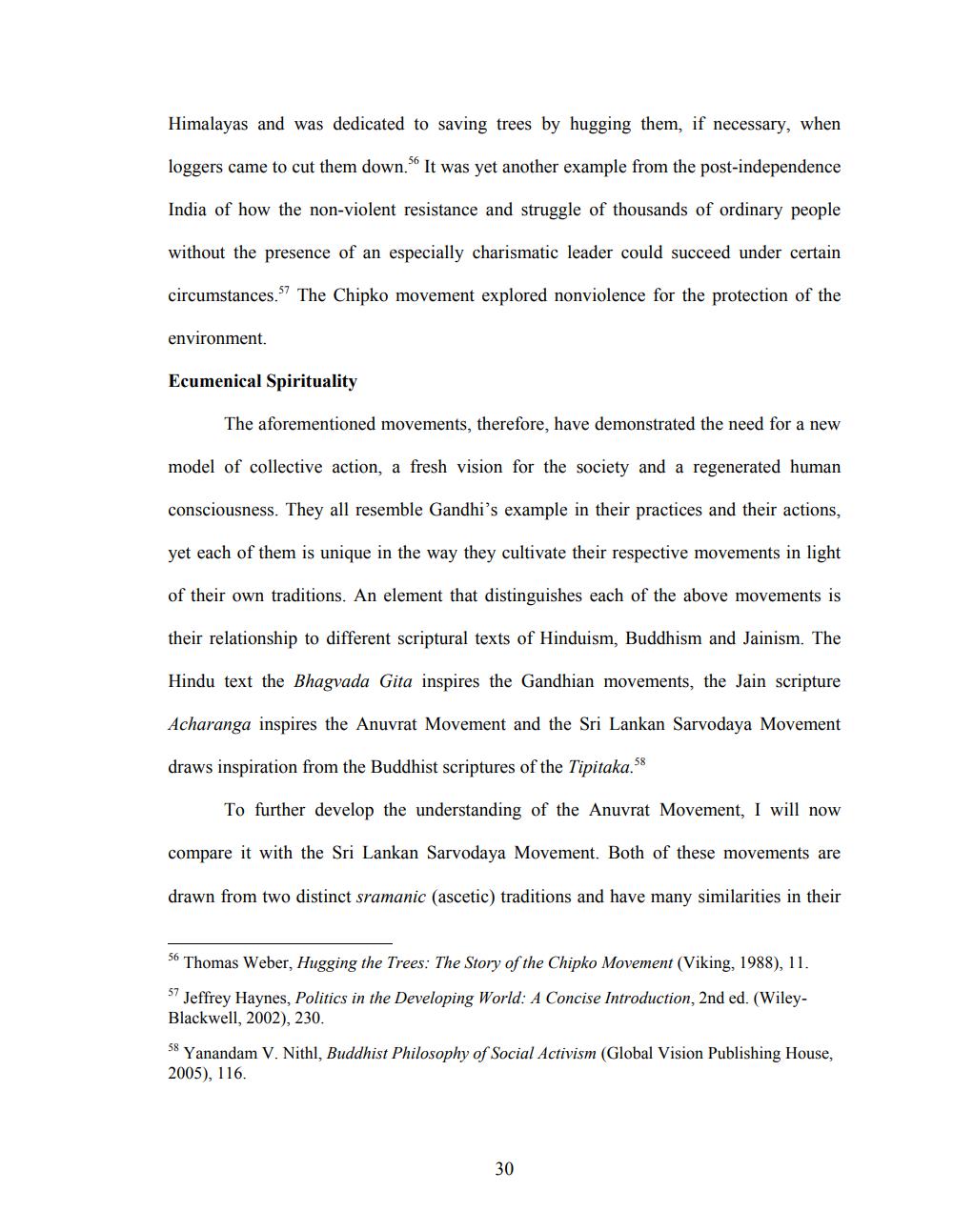________________
Himalayas and was dedicated to saving trees by hugging them, if necessary, when
loggers came to cut them down. It was yet another example from the post-independence
India of how the non-violent resistance and struggle of thousands of ordinary people
without the presence of an especially charismatic leader could succeed under certain
circumstances. The Chipko movement explored nonviolence for the protection of the
environment.
Ecumenical Spirituality
The aforementioned movements, therefore, have demonstrated the need for a new
model of collective action, a fresh vision for the society and a regenerated human
consciousness. They all resemble Gandhi's example in their practices and their actions,
yet each of them is unique in the way they cultivate their respective movements in light
of their own traditions. An element that distinguishes each of the above movements is
their relationship to different scriptural texts of Hinduism, Buddhism and Jainism. The
Hindu text the Bhagvada Gita inspires the Gandhian movements, the Jain scripture
Acharanga inspires the Anuvrat Movement and the Sri Lankan Sarvodaya Movement
draws inspiration from the Buddhist scriptures of the Tipitaka.”
To further develop the understanding of the Anuvrat Movement, I will now
compare it with the Sri Lankan Sarvodaya Movement. Both of these movements are
drawn from two distinct sramanic (ascetic) traditions and have many similarities in their
56 Thomas Weber, Hugging the Trees: The Story of the Chipko Movement (Viking, 1988), 11.
37 Jeffrey Haynes, Politics in the Developing World: A Concise Introduction, 2nd ed. (WileyBlackwell, 2002), 230.
** Yanandam V. Nithl, Buddhist Philosophy of Social Activism (Global Vision Publishing House, 2005), 116.
30




